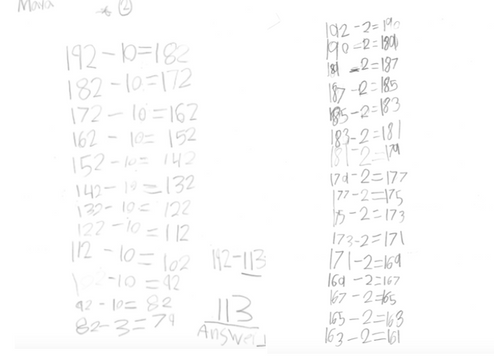Lesson Study Cycle 1

Why Lesson Study?
“Lesson Study is a Japanese model of teacher-led research in which a triad of teachers work together to target an identified area for development in their students’ learning. Using existing evidence, participants collaboratively research, plan, teach and observe a series of lessons, using ongoing discussion, reflection and expert input to track and refine their interventions.” - Trust Development Network, 2015
Lesson study presents an opportunity for a community of teachers come together, in the best interest of the student, to support student learning. The teaching community, acts as doctors when seeking solutions. They collaborate and problem solve as a team. Lesson take the “my” out of teachers response of students and they become “ours.”
Research Question
How can we help students use academic language in regards to mathematical discussion?
Theory of Action
If we as teachers build upon students’ academic language, then students will be able to describe their math thinking, resulting in math agency and effective discourse.
Content Goal
Students will understand that a JSU (joint start unknown) can be done by counting up or counting down.
Equity Goals
Equity Goals - Students will listen to, value, and build off of each other’s ideas.
Focus Students
My position in the lesson study was to observe a focus student during the lesson and document his strategies and interactions. Four different math students were chosen as the because it was felt that they were the best four to represent the class as a whole. Please click the link below to read about the focus students, their current mathematical
Anticipatory Planning
As a research team we thought about and anticipated how our focus students would approach, solve, and talk about the problem. Click the links below to look at our anticipatory plan and lesson plan.
Anticipatory Planning
Research Lesson & Observation
Launch:
The lesson was a CGI lesson following the launch, explore, and discuss structure. In the launch the teacher reads the problem, three students repeat the problem, and then students are asked a comprehension question. When/if there is a disagreement during the comprehension questions students discuss their reasoning without telling how they will solve the problem. The teacher closes the launch by saying, "I cannot wait to see how you solve this problem".
Explore:
Students work independently grappling with the problem. Students have Unifix cubes, a hundreds chart, and tens, ones, and hundreds manipulatives available to them.
Discuss:
Three students are chose to present their strategies to the class. Students explain what they did and why they did it. The class responds but saying what they notice and questions they might have. The discussion is concluded by looking at similarities and differences between the strategies.
The Debrief
The research team met after the lesson to discuss what they learned about their research question and theory of action.
Bailey's Reflection:
I believe the lesson went well. All the things we put in place - vocab wall, turn and talks, and the partners helped the lesson. The turn and talk after the comprehension question helped students stay engaged. It was awesome to have so many people there to provide notes for additional structures.
Becca's Reflection:
Becca watched focus student one and was intrigued by the way he grappled with the problem and his perceived status as a mathematician. She noticed that focus student one is very detail oriented and was persistent on solving the problem.
Lilly's Reflection:
Lilly was responsible for watching focus student four. She was happy about how happy and engaged the focus student was throughout the lesson. She appreciated how respectful the focus student was to her peers and how eager she was to learn.
Sandy's Reflection:
Sandy was intrigued by the thinking of focus student two. She noticed that he started with standard algorithm and attempted a second strategy. She wants to hear more about focus student two's thinking in the future.
Key Learnings
The team identified two big takeaways from the lesson:
1. The importance of a student created vocabulary wall that can be referred back to frequently between the teacher and the students.
2. Consistently built in structures for students to discuss mathematics (comprehension question, sentence starters, math partners, and discourse) are essential in effective discourse.



